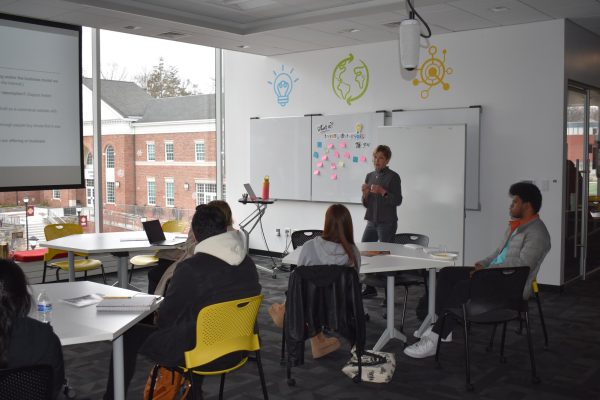Underemployment another problem facing new graduates
January 30, 2014
Underemployment rates for recent college grads in the U.S. have increased dramatically in the last 20 years, causing many overqualified people to take on lower-pay jobs.
The study, backed by the Federal Reserve Bank of New York, analyzed over 20 years of data and found that recent college graduates are taking on jobs that they are overqualified for, or are settling for retail or bartending jobs.
Jake Villanova, a sophomore and a chemistry major, hopes to work at an established company like Pepsi, but is unsure if he could get the job.
“I work very hard to prepare myself for my field. But at the same time, I have a friend who recently graduated who still can’t find a job in his field,” Villanova said.
Ashley Tomblin, a senior and an English major, doesn’t mind taking up a part-time job to help pay off loans.
“Everyone has to do it,” she said. “But I’ve worked so hard for my degree.”
The underemployment rate has only increased since 2001, rising from 34 percent to 44 percent.
The unemployment rate has decreased since then to a five-year low of seven percent, but that has been partially attributed to the large number of people who have given up looking for jobs entirely.
The scarcity of jobs is still a problem.
When the information in the study was broken down, it was found that those with an architecture, liberal arts or social science degree have a harder time finding a job than those with a health or education degree.
Tomblin is aware of this.
“Finding a job in my field scares me. I’m at a point where I don’t know what to do,” said Tomblin.
The study also showed that the average college graduate in the U.S. owes around $29,000 in student loans.
Iona costs $32,770 for a commuter and $45,945 for a resident per year before any federal aid or scholarships are accounted for.
The College Board estimates yearly the average cost of room and board as well as tuition for the undergraduate student. For the 2013-2014 school year, a public four-year college would cost $18,391 for an in-state student and $31,701 for an out-of-state student. The average cost of a private college is $40,917.
These numbers place Iona at the higher end of average, along with most other private colleges and universities.
Molly Walsh, a sophomore and a speech language pathology major, is definitely worried about college loans.
“I have to go to grad school for my field, which means more loans,” she said.
Many recent grads are staying at home longer than they previously have.
Since 2001, the percentage of college graduates from ages 18 to 24 living at home has increased from 31 percent to 45 percent.
When the age range is raised to 18 to 34, the percentage changes from 13 percent in 2001 to 21 percent in 2011.
Walsh is worried about living independently.
“I’d like to live on my own and not rely on my parents, but costs of rent, bills, groceries, topped with student loans, is overwhelming,” she said. “Ideally, I’d like to be out of the house in four to five years.”













